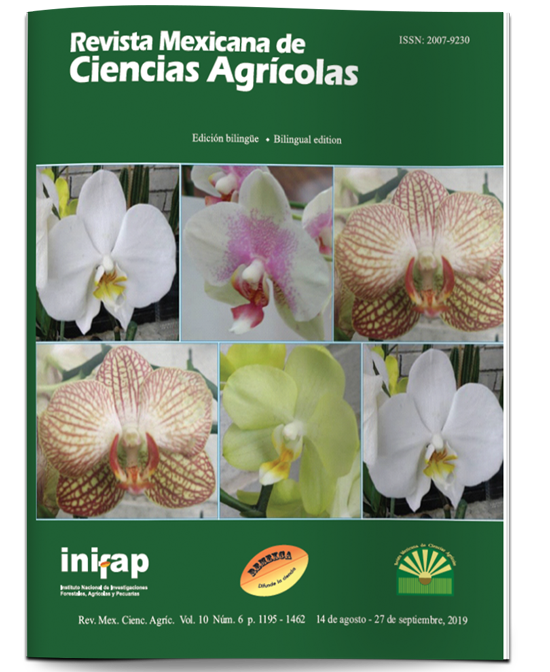Cold hours decrease as a result of climate change in Mexico
DOI:
https://doi.org/10.29312/remexca.v10i6.1688Keywords:
CPR, deciduous fruit trees, global warming, historical trendAbstract
In Mexico, deciduous fruit trees are grown in the center and north of the country where the temperature, at the end of autumn and during winter, is low enough for defoliation of trees to occur and lethargy occur during winter. Global warming, as an effect of climate change, has the potential to reduce the cold available in the winter and affect the production of deciduous fruit trees. The objective of this work was to know the effect of climate change, on the accumulation of cold hours in the winter period. A historical analysis was carried out on the variation of the number of cold hours (HF) and a similar analysis in the climatic scenarios 2030, 2050 and 2070 in the 4.5 and 8.5 CPR. Both the historical analysis and the scenarios were the effects of climate change, which will be unfavorable for the cultivation of fruit trees with a temperate climate. Global warming will cause a decrease in the surface with accumulation of 600 to 800 HF of 11.7, 25.8 and 33% in climatic scenarios 2030, 2050 and 2070 of 4.5 CPR, respectively and up to 99.5% of the surface with accumulation of 800 to 900 HF in the 2070 climate of 8.5 CPR. On the other hand, the area with little accumulation of HF (50 to 200) will increase 11.5, 29.3 and 36.4% in the 2030, 2050 and 2070 climatic scenarios of the 4.5 CPR, respectively. The cultivation of deciduous fruit trees in the future will be limited by the decrease in HF, mainly in areas with greater accumulation of cold, in the same way can be affected the crops of the autumn-winter cycle such as cereals.
Downloads
Downloads
Published
How to Cite
Issue
Section
License
The authors who publish in Revista Mexicana de Ciencias Agrícolas accept the following conditions:
In accordance with copyright laws, Revista Mexicana de Ciencias Agrícolas recognizes and respects the authors’ moral right and ownership of property rights which will be transferred to the journal for dissemination in open access. Invariably, all the authors have to sign a letter of transfer of property rights and of originality of the article to Instituto Nacional de Investigaciones Forestales, Agrícolas y Pecuarias (INIFAP) [National Institute of Forestry, Agricultural and Livestock Research]. The author(s) must pay a fee for the reception of articles before proceeding to editorial review.
All the texts published by Revista Mexicana de Ciencias Agrícolas —with no exception— are distributed under a Creative Commons License Attribution-NonCommercial 4.0 International (CC BY-NC 4.0), which allows third parties to use the publication as long as the work’s authorship and its first publication in this journal are mentioned.
The author(s) can enter into independent and additional contractual agreements for the nonexclusive distribution of the version of the article published in Revista Mexicana de Ciencias Agrícolas (for example include it into an institutional repository or publish it in a book) as long as it is clearly and explicitly indicated that the work was published for the first time in Revista Mexicana de Ciencias Agrícolas.
For all the above, the authors shall send the Letter-transfer of Property Rights for the first publication duly filled in and signed by the author(s). This form must be sent as a PDF file to: revista_atm@yahoo.com.mx; cienciasagricola@inifap.gob.mx; remexca2017@gmail.
This work is licensed under a Creative Commons Attribution-Noncommercial 4.0 International license.



